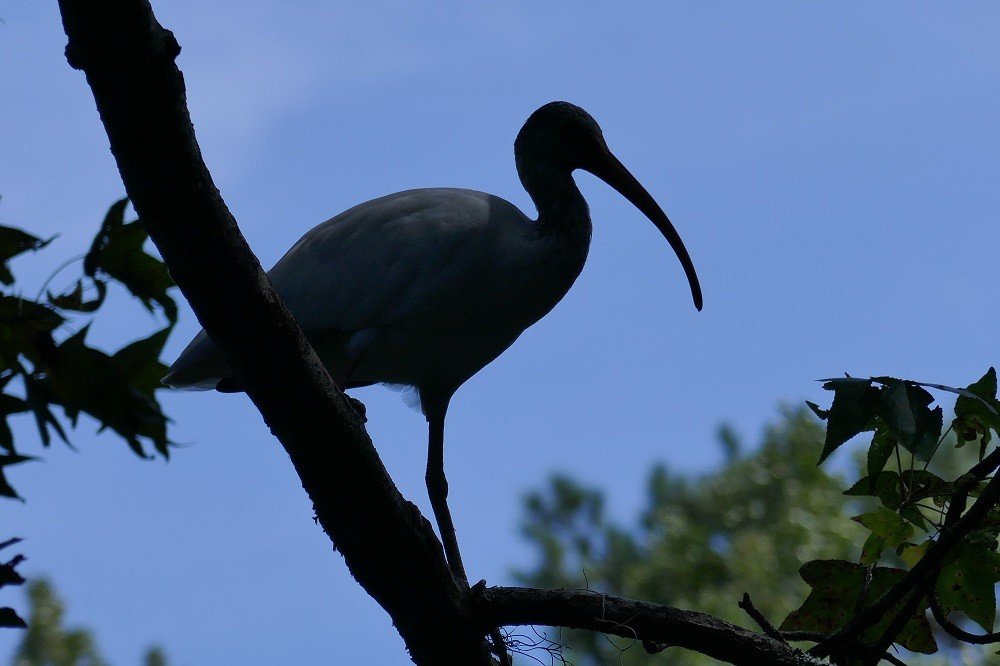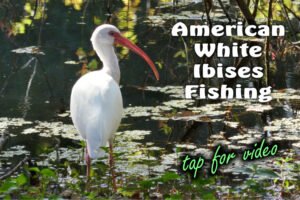American White Ibis
(Eudocimus albus)

Description
The American white ibis, Eudocimus albus, is a large white bird with a pink face, long recurved pink bill, and long pink legs. Their wings have a small black patch that is best seen during flight. They are generally around 25 inches in height.
Juvenile white ibis are mottled brown and white depending upon their age.
They are found in the Threskiornithidae family along with spoonbills.

Behavior
White ibises generally hang out together in flocks wading through shallow water or foraging for food in moist soil, and leaf litter. Feeding together provides safety in numbers and can increase the likelihood of a meal because there are many birds flushing prey so one of the flock is bound to get a meal or two.
Herons, and other wading birds, can sometimes be found feeding with the ibis flock to take advantage of the flushed prey as well.
When feeding they can be heard making little honk-type sounds. When they find a bit of food their little honks get louder and faster and occasionally, loud and boisterous. Squabbles over tidbits of food with others of the flock do readily occur.

Habitat
White ibises can be found in fresh and salt water wetlands, coastal areas, salt marshes, ponds, lakes, streams, and surrounding areas.
They are found along the coast of the United States primarily in the southeast, but are occasionally found as far north as New Jersey.
White ibises used to be on the federally endangered list, but were delisted in 2017. However, they are still a protected species and have since been placed on the Imperiled Species Management Plan. Habitat loss and pollution of water sources are the two largest threats to this species of wading bird.

Food
White ibis forage for worms, grubs, snails, toads, and other small prey on land and when feeding in shallow water will consume things like shrimp, crabs, crawfish, frogs, insects, and small fish. Small flocks of white ibis are a common site in populated areas where they forage for food in lawns, golf courses, swales, roadsides, ditches, and gardens.

Nesting & Young
White ibis breed communally in large colonies sometimes numbering in the thousands of birds.
The male and female build their loose platform-type nests together using dried and fresh twigs, leaves, and roots. Once completed, the nest is lined with fresh leaves.
The nest location can be anywhere from eight to fifteen feet off the ground.
Breeding, and nesting, occurs between February and October. The female lays two to four eggs that are bluish or greenish in color with brown splotches and speckles. Both parents incubate the eggs for from 21 – 23 days. The chicks are semi-altricial when they hatch and the mother ibis feeds them by regurgitating food into their bills. The white ibis chicks are black with pink and black bills, a light grey underbelly, and gray legs. In about three weeks the young are able to fly and forage for food with their parents.







